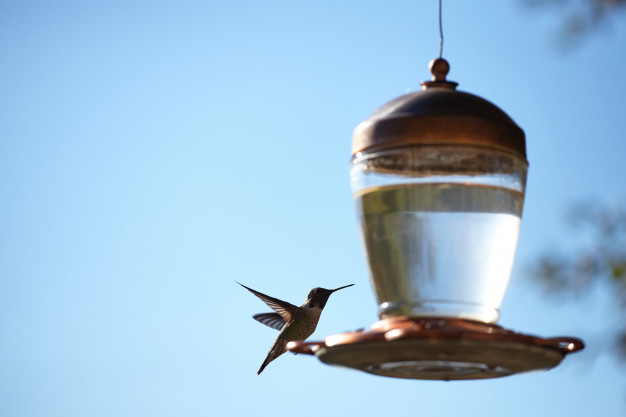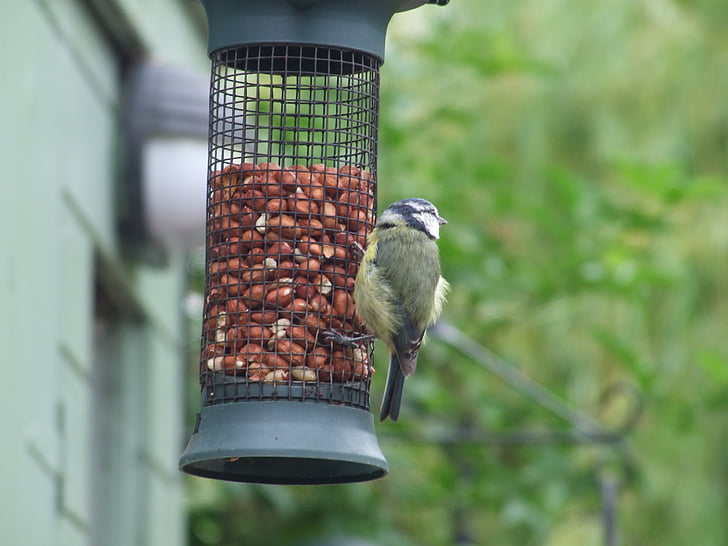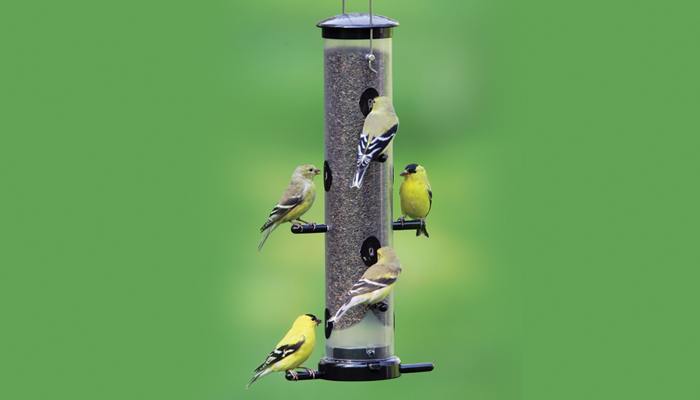Glass or plastic, mundane or marvelous, there’s an endless assortment of functional and artistic feeders out there to meet your hummingbird feeding needs. That, of course, begs the question, with so many options available how do I know I’m making the right choice?
In our section on the Basics of Attracting and Feeding Hummingbirds we mentioned the color red. Hummingbirds are readily attracted to the color red as an initial incentive but when it comes to hummingbird feeding, the contents of the feeder are more important than the color. While many commercial feeders contain red in their color schemes, it isn’t absolutely essential. An assortment of feeders, some containing red, would be sufficient to entice the birds to your garden. They’ll make ample use of other colored feeders once they’ve been lured in. Also make note of the color yellow. Bees and wasps are attracted to the color yellow and your objective is to do what you can to keep them away (for reasons explained shortly).
Another consideration is glass over plastic. Glass feeders, while more fragile, offer greater longevity. Remember that an important element of hummingbird feeding is maintaining a clean feeder and that requires regular cleaning. Plastic feeders will more easily accept scratches from cleaning brushes which will accumulate over time. These imperfections in the surface may lead to easier mold growth and result in more frequent cleaning requirements but given the frequent cleanings your feeder will require anyway, it’s probably not a real concern.
Additional thoughts in selecting the right hummingbird feeding station are how accomodating they are to other critters. Ants, wasps and bees are your main concern as these creatures can both foul the sugar water or simply be such a nuisance as to cause your hummingbirds to abandon your offering entirely. While there are ant moat options to deal with the ants, feeders should restrict access to the water sufficiently that a hummingbird’s long beak and tongue can reach but a bee or wasp can’t.
Finally, your own aesthetic tastes come into play. As functional as some low-end feeders may be, they’re hardly pretty. Whether displayed in a beautiful hummingbird garden or hanging prominently near a window, some folks want the best of both worlds and aspire to both beauty and functionality. Hummingbird feeding is only part of the objective. Another beautiful element to showcase their home or garden is often another. And, trust me on this, some of the handblown glass humingbird feeding stations out there are simply astounding. Just remember, you’ll pay considerably more for a handmade feeder but the look is often worth the price.





